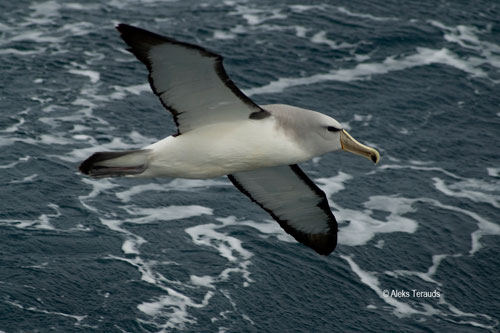Paul Sagar (National Institute of Water and Atmospheric Research, Christchurch, New Zealand) and colleagues have recently published on aspects of the population biology of Salvin's Albatross Thalassarche salvini, a relatively little-studied Vulnerable species, in the journal Notornis.
The paper's abstract follows:
"We investigated the population size and annual survival of Salvin's albatrosses (Thalassarche salvini) breeding at the Western Chain, The Snares, New Zealand. A count of breeding pairs during incubation resulted in totals of 1100-1200 breeding annually on Toru and Rima Islets in the 3 years 2008-2010; none was seen breeding on Tahi, Rua or Wha Islets. The majority of adults bred annually. Based on banding and recapture the annual survival probability of breeding birds was estimated to be 0.967 while that of known-age birds banded as chicks in Feb 1986 was estimated at 0.939. A bird banded as a chick on the Bounty Is in 1985 was found breeding on Toru Islet of the Western Chain in the 3 years 2008-2010. This is the first record of a banded Salvin's albatross breeding away from its natal island."

Salvin's Albatross at sea
Photograph by Aleks Terauds
Reference:
Sagar, P.M., Charteris, M.R., Carroll, J.W.A. & Scofield, R.P. 2011. Population size, breeding frequency and survival of Salvin's albatrosses (Thalassarche salvini) at the Western Chain, The Snares, New Zealand. Notornis 58: 57-63.
With thanks to Matt Rayner, ACAP's Australasian News Correspondent, for information.
John Cooper, ACAP Information Officer, 1 December 2011

 Français
Français  English
English  Español
Español